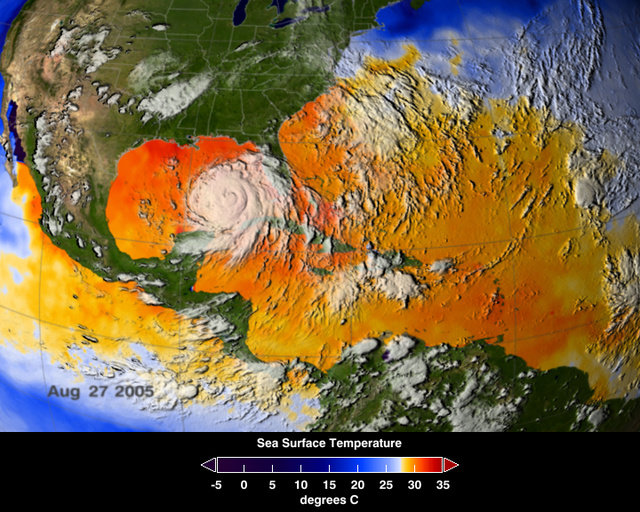Researchers from the University of California, Irvine and NASA have uncovered a remarkably strong link between high wildfire risk in the Amazon basin and the devastating hurricanes that ravage North Atlantic shorelines. The climate scientists' findings appear in the journal Geophysical Research Letters near the 10th anniversary of Hurricane Katrina's calamitous August 2005 landfall at New Orleans.
"Hurricane Katrina is indeed part of this story," said James Randerson, Chancellor's Professor of Earth system science at UCI and senior author on the paper. "The ocean conditions that led to a severe hurricane season in 2005 also reduced atmospheric moisture flow to South America, contributing to a once-in-a-century dry spell in the Amazon. The timing of these events is perfectly consistent with our research findings."
Lead author Yang Chen discovered that in addition to the well-understood east-west influence of El Niño on the Amazon, there's also a north-south control on fire activity that's set by the state of the tropical North Atlantic. Warm ocean waters help hurricanes develop and gather strength and speed on their way to North American shores. They also tend to pull a large belt of tropical rainfall -- known as the Intertropical Convergence Zone -- to the north, Chen said, drawing moisture away from the southern Amazon and leading to heightened fire risk over time.
"North Atlantic hurricanes and Amazon fires are related to one another through shared linkages to ocean-atmosphere interactions in the tropical Atlantic Ocean," he said.
The mechanics of the ocean-fire link in the Amazon are fairly straightforward. When the North Atlantic sea surface temperatures are warmer than normal, less rain falls in the southern Amazon. As a consequence, groundwater is not fully recharged by the end of the rainy season. Coming into the next dry spell, when there's less water stored away in the soil, plants can't evaporate and transpire as much water out through their stems and leaves. As a result, the atmosphere gets drier and drier, creating conditions in which fires can spread rapidly. Ground-clearing fires set by farmers for agricultural purposes can easily jump from fields to dense forests under these conditions.
"Understory fires in Amazon forests are extremely damaging, since most rainforest trees are not adapted to fire," noted co-author Douglas Morton of NASA's Goddard Space Flight Center in Greenbelt, Md. "The synchronization of forest damages from fires in South America and tropical storms in North America highlights how important it is to consider the Earth as a system."
The team pored over years of historical storm and sea surface temperature data from the National Oceanic & Atmospheric Administration and fire data gathered by NASA satellites. The results showed a striking pattern, a progression over the course of several months from warm waters in the tropical North Atlantic to a dry and fire-prone southern Amazon and more destructive hurricane landfalls in North and Central America.
According to Randerson, the importance of this study is that it may help meteorologists develop better seasonal outlooks for drought and fire risk in the Amazon, leveraging investments by NOAA and other agencies in understanding hurricanes. The research findings also give policymakers throughout the hemisphere a basis for decisions about coastal protections in hurricane-prone areas and fire management in drought-affected areas.
"The fires we see in the U.S. West are generally lightning-ignited, whereas they're mostly human-ignited in the Amazon, but climate change can have really large effects on the fire situation in both regions," Randerson said. "Keeping fire out of the Amazon basin is critical from a carbon-cycle perspective. There's a huge amount of carbon stored in tropical forests; we really want to keep the forests intact."
Randerson and Chen credit NASA and NOAA for providing free public access to real-time data from their satellites and other sensors and the Gordon & Betty Moore Foundation, NASA and the U.S. Department of Energy's Office of Science for research support.
"Drought in the Amazon and hurricanes in the North Atlantic are such costly and potentially catastrophic disturbances [that] we really rely on NASA and NOAA for help in making accurate forecasts and long-range predictions," Randerson said.
Source:
University of California, Irvine. (2015, August 18). Amazon fire risk linked to devastating hurricanes. ScienceDaily. Retrieved August 19, 2015 from www.sciencedaily.com/releases/2015/08/150818131803.htm


